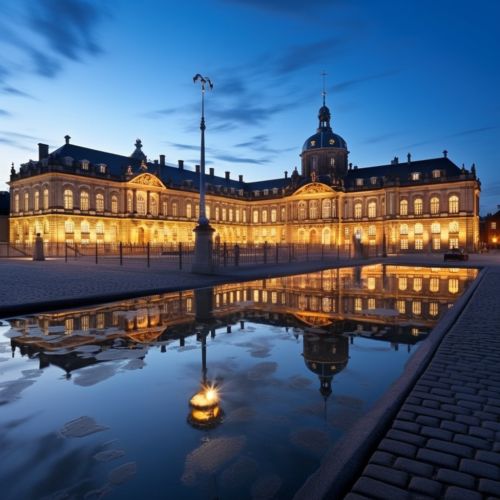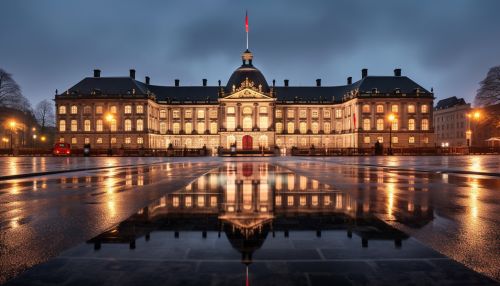Margrethe II of Denmark
Early Life and Education
Margrethe Alexandrine Þórhildur Ingrid, known as Margrethe II, was born on April 16, 1940, in Amalienborg Palace, Copenhagen. She is the eldest daughter of King Frederik IX and Queen Ingrid. Margrethe's birth was a significant event in Danish history as she was the first girl born to a reigning Danish monarch since the reign of Christian IV in the 17th century.
Margrethe's education was diverse and comprehensive, reflecting her future role as queen. She attended Zahle's School, a private school in Copenhagen, where she studied subjects such as history, languages, and philosophy. She later studied at colleges in Denmark and other European countries, including the United Kingdom and France. She studied at the Cambridge University, where she focused on archaeology, political science, and economics. She also attended the London School of Economics and the Aarhus University in Denmark.


Ascension to the Throne
Margrethe's ascension to the throne was not a foregone conclusion. Denmark's Act of Succession, adopted in 1853, did not allow women to ascend to the throne. However, a constitutional amendment in 1953, known as the Act of Succession, allowed female succession, paving the way for Margrethe to become queen.
On January 14, 1972, following the death of her father, Margrethe ascended to the throne, becoming the first female monarch of Denmark since the reign of Queen Margrethe I in the 14th century. Her ascension was met with widespread public approval, and she was officially crowned as Queen Margrethe II on September 14, 1972.
Reign
Margrethe II's reign has been marked by her active involvement in Danish society and her commitment to maintaining the monarchy's relevance in modern Denmark. She has been an active participant in state affairs, regularly meeting with the Prime Minister and other government officials. She also frequently represents Denmark at international events and state visits.
Margrethe II has also been involved in various cultural activities. She has a keen interest in archaeology, history, and art, and has contributed to several archaeological excavations. She is also known for her artistic talents, particularly in painting and costume design. Her artwork has been displayed in several exhibitions, and she has designed costumes for several theatrical productions.
Personal Life
Margrethe II married French diplomat Henri de Laborde de Monpezat on June 10, 1967. They have two sons, Crown Prince Frederik and Prince Joachim. Henri, known as Prince Henrik of Denmark, passed away in 2018.
Margrethe II is known for her strong personality and her commitment to her duties as queen. She is also known for her love of art, history, and archaeology, which she has incorporated into her role as queen.
Legacy
Margrethe II's reign has been marked by her commitment to maintaining the monarchy's relevance in modern Denmark. She has been an active participant in state affairs and has represented Denmark at numerous international events. Her reign has also been marked by her involvement in cultural activities, including archaeology and art.
Margrethe II's reign has also been marked by her commitment to gender equality. As the first female monarch of Denmark since the 14th century, she has been a role model for women in Denmark and around the world.
